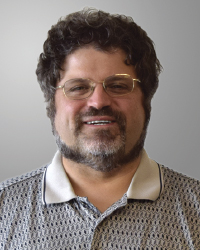 Reported new infections of COVID-19 have continued to ebb and flow around the world. But the need for an adaptable battery of diagnostic tests built around cutting-edge imaging that can be administered in a variety of settings — not to mention the continued study of the characteristics of the disease — has only increased over the last few months. Only a clear picture of what the infected, and their clinicians, are dealing with will provide a path to a cure.
Reported new infections of COVID-19 have continued to ebb and flow around the world. But the need for an adaptable battery of diagnostic tests built around cutting-edge imaging that can be administered in a variety of settings — not to mention the continued study of the characteristics of the disease — has only increased over the last few months. Only a clear picture of what the infected, and their clinicians, are dealing with will provide a path to a cure.
Here in the U.S., an infusion of funding at the national level — made available to the National Institutes of Health and particularly the National Institute of Biomedical Imaging and Bioengineering (NIBIB) — is targeted toward the contributions of small and large companies, research institutions, and nonprofits, along with other agencies involved in developing reliable, versatile testing. Operation Warp Speed, as it is known in Washington, D.C., will involve elements of the photonics sector across the country, building on the successful Point-of-Care Technology Research Network (POCTRN) that has shared resources and data for over a dozen years. As Bruce Tromberg, director of NIBIB, points out, the hundreds of applications received for funding exploration and discovery indicate the excitement — and urgency — with which photonics researchers, designers, and manufacturers have responded.
Our COVID-19 coverage in this edition, beginning on page 16, shines a light on vital work in the biophotonics realm. Efforts include the use of imaging to gauge the side effects of touted treatments; Raman spectroscopy to identify proteins consistent with the disease; commercially available lasers to potentially kill the virus; newly developed sensors to detect its presence; strategies applied in decontaminating wastewater to combat COVID-19; and LED light to disinfect surfaces on which the virus may linger.
In “Biopinion,” Brian T. Cunningham of the University of Illinois at Urbana-Champaign confirms that technology that can read data from across the spectrum will be at the very heart of the way scientists and clinicians look at and treat the pandemic. Read more here.
Elsewhere in our pages, Bethany Almeida, Igor L. Medintz, and James B. Delehanty explore how the use of quantum dots allows for deep resolution in a large number of cells. Learn about this work on here. Patrick Sasso and Dan Callen explain how superior lasers and optical components improve the accuracy and efficiency of flow cytometers. Find the details here.
Zibang Zhang and Guoan Zheng expound on how the use of a diffuser can allow for lensless microscopy without losing clarity or detail. Read their story here. And Brendan Brinkman illustrates how digital slide imaging can provide depth of detail while not losing sight of any piece of a specimen. Learn more here.
Enjoy the issue!
